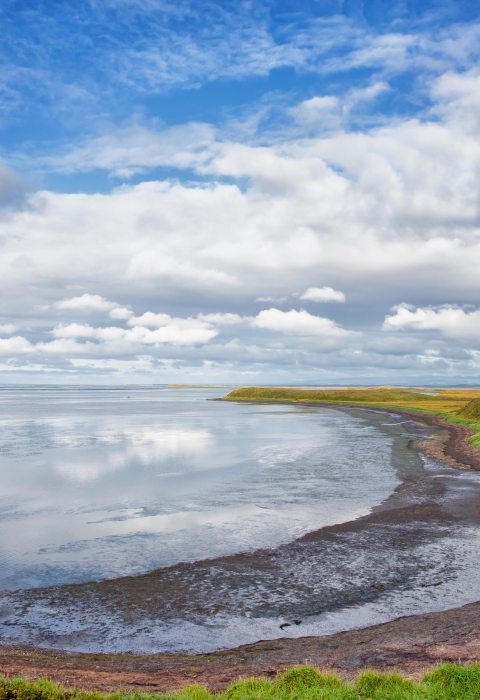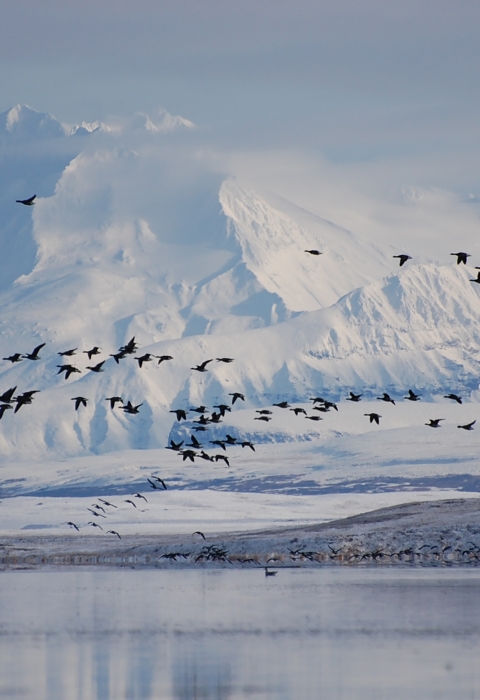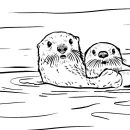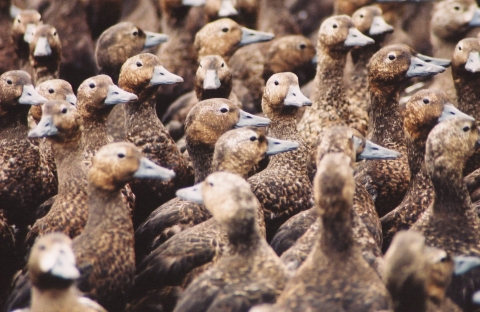Birds are sensitive during the nesting season. Vegetation clearing, ground disturbance, heavy wake near shorelines and other site construction and recreational activities can destroy eggs or nestlings or cause nest abandonment. If you encounter an active nest, leave it be and give it space until young hatch and depart the area. Do not destroy eggs, chicks, or adults of wild bird species. Learn about the laws that govern migratory birds in Alaska including possible exceptions for subsistence gathering. More information on avoiding waterbird harassment and timing recommendations for construction activities to minimize impacts to nesting birds.
For information on the potential land exchange for a road connecting King Cove and Cold Bay through Izembek National Wildlife Refuge and the Congressionally designated Izembek Wilderness please visit Potential Land Exchange for a Road Between King Cove and Cold Bay.
The landscape here is dynamic, with soaring peaks like Pavlof Volcano, the heavily-glaciated Shishaldin Volcano (Unimak Island), Frosty Peak, and the jagged spires of the Aghileen Pinnacles. Topography stretches from sea level to rugged volcanic mountains exceeding 9,000 feet, with coastal marshes and berry-producing, low-growing bush tundra interspersed with numerous lakes, ponds and alder brush-lined stream in between.
Visit Us
Travel to the Izembek National Wildlife Refuge, near the tip of the Alaska Peninsula, is logistically challenging, but definitely worth the effort! The scenery, wildlife, and wilderness experiences that the refuge offers are truly unique - the experience of a lifetime. Most visitors access the refuge from the local community of Cold Bay, either by commercial flight from Anchorage or arriving by ferry with the Alaska Marine Highway System. Visit the refuge headquarters building to explore a mini visitor center with displays and exhibits, pick up information, and chat with staff.
Location and Contact Information
Projects and Research
Refuge staff monitor several species to fulfill the refuge's mission. Working cooperatively with the State of Alaska staff assist with aerial surveys throughout the year to monitor the health and productivity of the Southern Alaska Peninsula Caribou Herd. Surveys of brown bear, moose, tundra swans, Pacific black brant, Taverner's and cackling Canada geese, emperor geese, other waterfowl, shorebirds and songbirds monitor population numbers and productivity. Since 1961, refuge staff have captured and banded Steller's eiders (a threatened species) during their molting period on Izembek Lagoon. The data generated by these studies provide wildlife managers with critical population and survival rate information.




